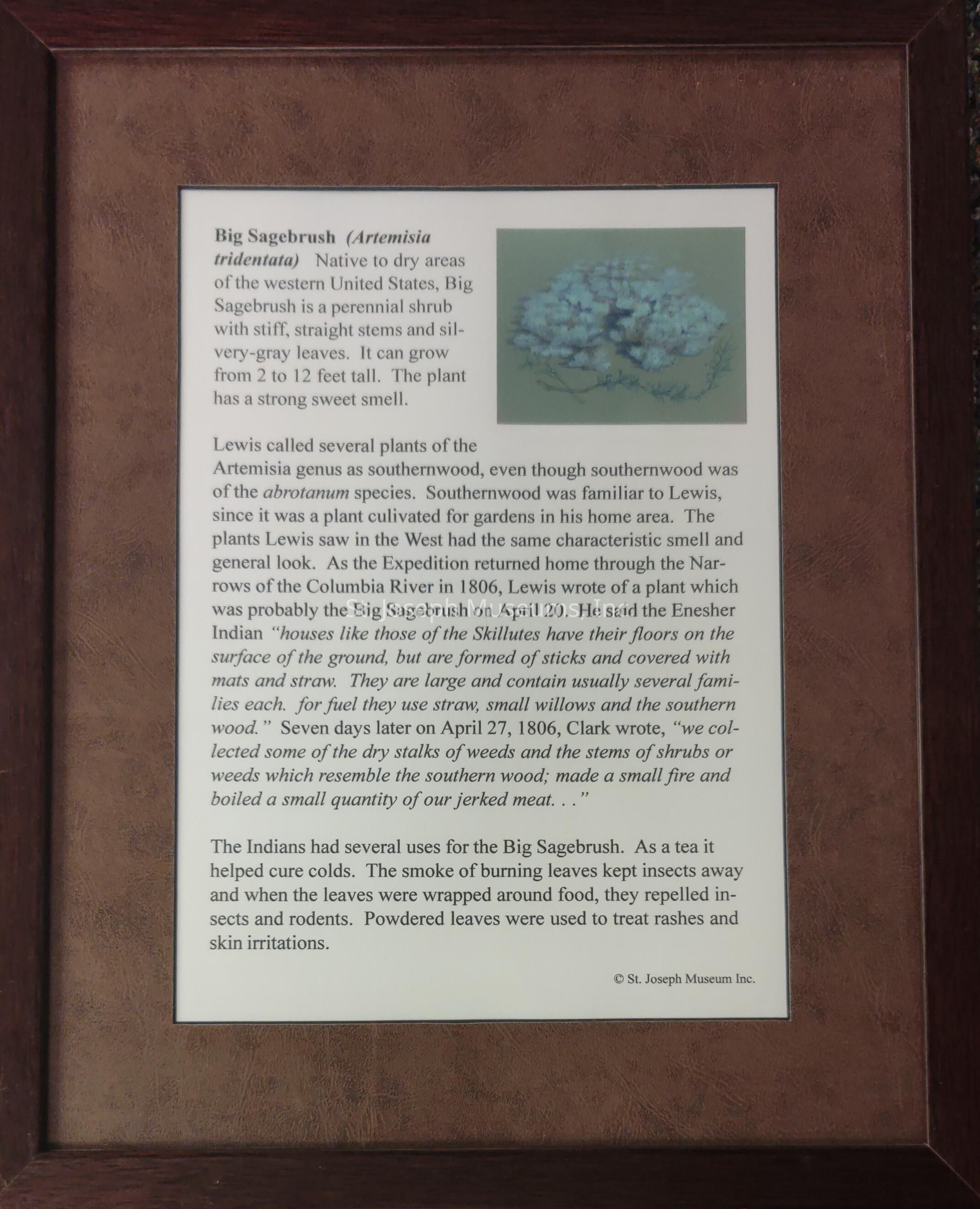Name/Title
Big Sagebrush (Artemisia tridentata)Entry/Object ID
2021.1.56 BScope and Content
Big Sagebrush (Artemisia tridentata) plant description, framed.
Native to dry areas of the western United states, Big Sagebrush is a perennial shrub with stiff, straight stems and silvery-gray leaves. It can grow from 2 to 12 feet tall. The plant has a strong sweet smell.
Lewis called several plants of the Artmisia genus as southernwood, even though southernwood was of the abrotanum species. Southernwood was familiar to Lewis, since it was a plant cultivated for gardens in his home area. The plants Lewis saw in the West had the characteristic smell and general look. As the Expedition returned home through the Narrows of the Columbia River in 1806, Lewis wrote of a plant which was probably the Big Sagebrush on April 20. He said the Enesher Indian "houses like those of the Skillutes have their floors on the surface of the ground, but are formed of sticks and covered with mats and straw. They are large and contain usually several families each. for fuel they use straw, small willows, and the southern wood." Seven days later on April 27, 1806, Clark wrote, "we collected some of the dry stalks of weeds and the stems of shrubs or weeds which resemble the southern wood; made a small fire and boiled a small quantity of our jerked meat..."
The Indians had several uses for the Big Sagebrush. As a tea it helped cure colds. The smoke of burning leaves kept insects away and when the leaves were wrapped around food, the repelled insects and rodents. Powdered leaves were used to treat rashes and skin irritations.Context
Originally designed by the St. Joseph Museum in the fall of 2004. Titled "Botanical Wonders of the Uncharted West. The Recorded Flora of the Lewis & Clark Expedition."Collection
Lewis and ClarkLexicon
LOC Thesaurus for Graphic Materials
Botanical drawings, Expeditions & surveysArchive Items Details
Title
Big Sagebrush (Artemisia tridentata)Creator
Mary L. FletcherDate(s) of Creation
2004Subjects
Plants, Watercolor paintingsParts
Count
2Parts
Watercolor of plant and descriptive label, both framed.Condition
Overall Condition
Very GoodProvenance
Notes
"Botanical Wonders of the Uncharted West" visually depicts how well Lewis followed Jefferson's instructions. In recognition of this achievement, The S. Joseph Museums, Inc. commissioned accomplished artist Mary Fletcher to create fifty (50) selected paintings of flora documented by the Corps during their Journey. These framed watercolor originals are accompanied by similarly framed labels, generated by former Head of Research Jackie Lewin, which describe the corresponding plants with appropriate quotations from the Journals. This collection makes available for study and appreciation plants that were new to Lewis and Clark, but which Native Peoples already recognized as valuable sources of food, medicine, and tools. Some of these still remain a mystery to many, but all will enjoy their beauty, their diverse uses, and their accomplished renderings.
